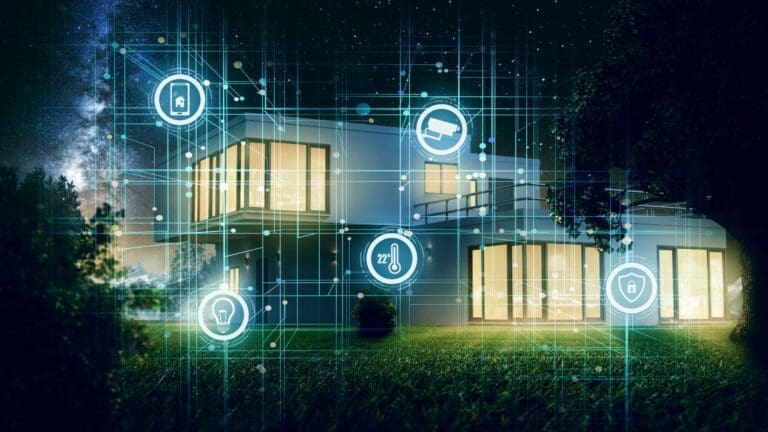
The House of 2040, built on a foundation of innovation, sustainability, and cutting-edge design, has been curated by Dan Caesar, CEO of Fully Charged, Imogen Bhogal, Presenter and Producer, and Robert Llewellyn.
A massive 57% of homes in Britain now contain a smart device and, with the global smart home market expected to generate a revenue of US$154.4bn in 2024, the journey towards an intelligent, eco-friendly future is well underway. Here are some of the factors driving innovation and growth.
Virtual power plants
In 2023, the UK grid averaged around 45% renewable energy, however, with smart home technology, everyone can turn their homes into a renewable energy power plant.
Solar PV could become the standard. With initial costs coming down around 90% since 2009, and households able to reduce energy bills by up to £450 per year using a 3.5 kilowatt-peak PV system, it is a no-regret choice for new-build homes.
EVs will become ever-increasingly sustainable for homes with solar power. With the development of chargers that fully integrate and communicate with the PV panels, smart control of home energy is simple and future-proofed.
Dave Roberts, UK Managing Director at GivEnergy, commented: “By 2040 we believe lots of houses will be virtual power plants (VPPs). By charging their batteries overnight using a lower variable tariff, customers can save up to £5 per day on energy. Some of our customers are making £24 a day selling their excess energy back to the grid with our GivBack service!”
Home energy generation brings with it the need to store excess energy to be used when it’s needed most, or sold back to the grid and there is an exponential uptake in battery solutions, as we hear on page 32 of this issue.
In 2040, smart homes will come with smart cars – vehicle-to-grid (V2G) technology is already available, so homeowners will have a huge amount of power at their fingertips, allowing the vehicle to discharge energy which can either be sold back to the grid or stored in home storage batteries, ready to be used at peak times.
“We’ve already seen multiple manufacturers launch cars with V2G capability – including the Volkswagen ID. 4 and the Renault 5 E-Tech electric – with more to follow this year. With limited options for storing clean energy, and challenges to managing peak load on the grid, this is truly an enabling technology, unlocking significant clean energy storage and distribution potential in cities,” comments avid electric vehicle advocate, Robert Llewellyn.
The future of heating
By 2040, new gas boilers will likely be a thing of the past. While some homes will turn to fully- electrified heating systems, such as resistance heaters and infra-red heating panels, heat pumps are becoming increasingly mainstream and heat networks are also on the increase.
“There are already over 17,000 heat networks in the UK, and nearly half a million homes and businesses connected to them; district heating can offer a source of low carbon heat to residential homes, and could even help tackle fuel poverty,” suggests engineer and broadcaster, Imogen Bhogal.
The House of 2040 benefits from a local district heating network that uses a singular central heat source, such as geothermal or data centres, to distribute warm water through a network of insulated pipes to multiple dwellings.
A recently- published study suggests that 4,000 wastewater treatment plants that sit within 2km of heating district networks could deliver around 175TWh of heat to the networks per year.
Building new houses
Almost 300,000 new houses will need to be built each year in the UK alone to keep up with demand, but building homes from scratch is taxing on the environment. Concrete remains one of the most widely-used materials in construction, with cement, the glue used to make concrete, emitting as much as 2.5 million tonnes of CO2 per year.
A switch to variants made from waste products such as wood shavings, hemps shives from the hemp fibre industry, or coal ash, could become more mainstream, saving between 40-100% of embodied CO2.
The gold standard for future housing is a passive house – a building that has a small ecological footprint being as much as 90% more energy efficient than typical building stock. Passive houses lend themselves to modular building techniques, which leads to greater savings, and less waste and carbon in construction.
“We must ensure nobody is left behind in the transition to clean energy, so while we can’t always build new homes, we can retrofit existing stock houses so that these, too, can enjoy the benefits of wind, solar and battery storage.
“We’re going to see huge advances in our homes over the next 10-15 years, and electrification really is key in providing affordable, low carbon housing, that offers smart spaces and a high quality of life for its inhabitants”, concludes Bhogal.
Image credit: iStock
